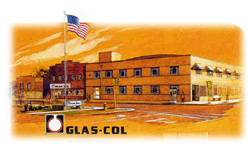 Pictures will speak a thousand words in the upcoming issue of BizVoice® in my feature story on twins Ted and Tom McKinney. For me, images of my day at the family farm in Tipton where they grew up are etched in my mind. The experience was among my most enjoyable memories – professionally and personally.
Pictures will speak a thousand words in the upcoming issue of BizVoice® in my feature story on twins Ted and Tom McKinney. For me, images of my day at the family farm in Tipton where they grew up are etched in my mind. The experience was among my most enjoyable memories – professionally and personally.
I visited the farm to interview them for an article that will appear as part of our agriculture series in the July-August issue. Why the McKinneys? That’s the question Ted humbly asked as we met and shook hands.
First, the family history is deeply rooted in farming. There’s the strong Purdue University connection (they’re third generation graduates of the College of Agriculture). And like their parents and grandparents before, both Ted and Tom are dedicated to making a difference in their community.
Tom is a seventh-generation Indiana farmer (he guides operations at the Tipton farm and another family farm in neighboring Clinton County). Ted is director of the Indiana State Department of Agriculture.
Touring the farm, which spans a few thousand acres, brought the McKinney legacy to life. Their passion for agriculture was contagious. Their childhood memories were rich. I could almost see the old yellow barn that served as a clubhouse of sorts in their youth before it was destroyed by straight line winds and made way for a modern shop.
I could picture them working alongside teens in the 1970s detasseling seed corn (the McKinneys were just 16 years old when they started managing their own crews) as they cultivated a strong work ethic and spirit of camaraderie. Tom operated the business for more than three decades.
“It was more than a money-making business. It was about transforming people’s lives,” declares his brother Ted.
Both have spent their lives trying to do just that.
Ted, among other causes, has been heavily involved in FFA and was instrumental in bringing both the organization’s national center and its convention to Indianapolis. Tom is president of the Indiana 4-H Foundation and has donated his time to a variety of other state and local initiatives. Each has brought his leadership to a variety of roles at Purdue.
Check out our memorable afternoon with one of Indiana’s first farming families in BizVoice when the July-August issue debuts on June 30.
 What in the world is a Sneakerhead?
What in the world is a Sneakerhead?
 There are many exciting plans in place to celebrate our beloved state’s 200th birthday. Among them is an upcoming book from the Bicentennial Commission, Indiana at 200: A Celebration of the Hoosier State. You can even
There are many exciting plans in place to celebrate our beloved state’s 200th birthday. Among them is an upcoming book from the Bicentennial Commission, Indiana at 200: A Celebration of the Hoosier State. You can even  Terre Haute-based
Terre Haute-based  Ball State University has become a state institution with quite a reputation for producing very skilled graduates. But you might not know much about its history. A group of students hope to remedy that with a new film project. Ball State reports:
Ball State University has become a state institution with quite a reputation for producing very skilled graduates. But you might not know much about its history. A group of students hope to remedy that with a new film project. Ball State reports: Growing up, I loved visiting my grandmother Dorothy’s house (we affectionately called her Dot – not grandma! She said it made her feel old).
Growing up, I loved visiting my grandmother Dorothy’s house (we affectionately called her Dot – not grandma! She said it made her feel old). Pictures will speak a thousand words in the upcoming issue of
Pictures will speak a thousand words in the upcoming issue of While digging into the fertile soil of our archive room, staff has discovered an Indiana Chamber report from August 1945 titled, “Aids Behind the Farm: A Directory of Functional Analysis of Governmental and Civic Organizations in the Field of Farming.” (Yes, the title is certainly a mouthful – potentially equaling a bushel of vegetables from a Hoosier farm.)
While digging into the fertile soil of our archive room, staff has discovered an Indiana Chamber report from August 1945 titled, “Aids Behind the Farm: A Directory of Functional Analysis of Governmental and Civic Organizations in the Field of Farming.” (Yes, the title is certainly a mouthful – potentially equaling a bushel of vegetables from a Hoosier farm.) “After seeing Jaws for the first time, I was scared to even get in the bath tub.”
“After seeing Jaws for the first time, I was scared to even get in the bath tub.” The title of this blog isn’t a clever attempt to rewrite “Sergeant Pepper’s Lonely Hearts Club Band,” even though it has been 50 years since the Beatles craze swept America. I’m taking us back to another moment in that landmark year: the 1964 World’s Fair.
The title of this blog isn’t a clever attempt to rewrite “Sergeant Pepper’s Lonely Hearts Club Band,” even though it has been 50 years since the Beatles craze swept America. I’m taking us back to another moment in that landmark year: the 1964 World’s Fair.